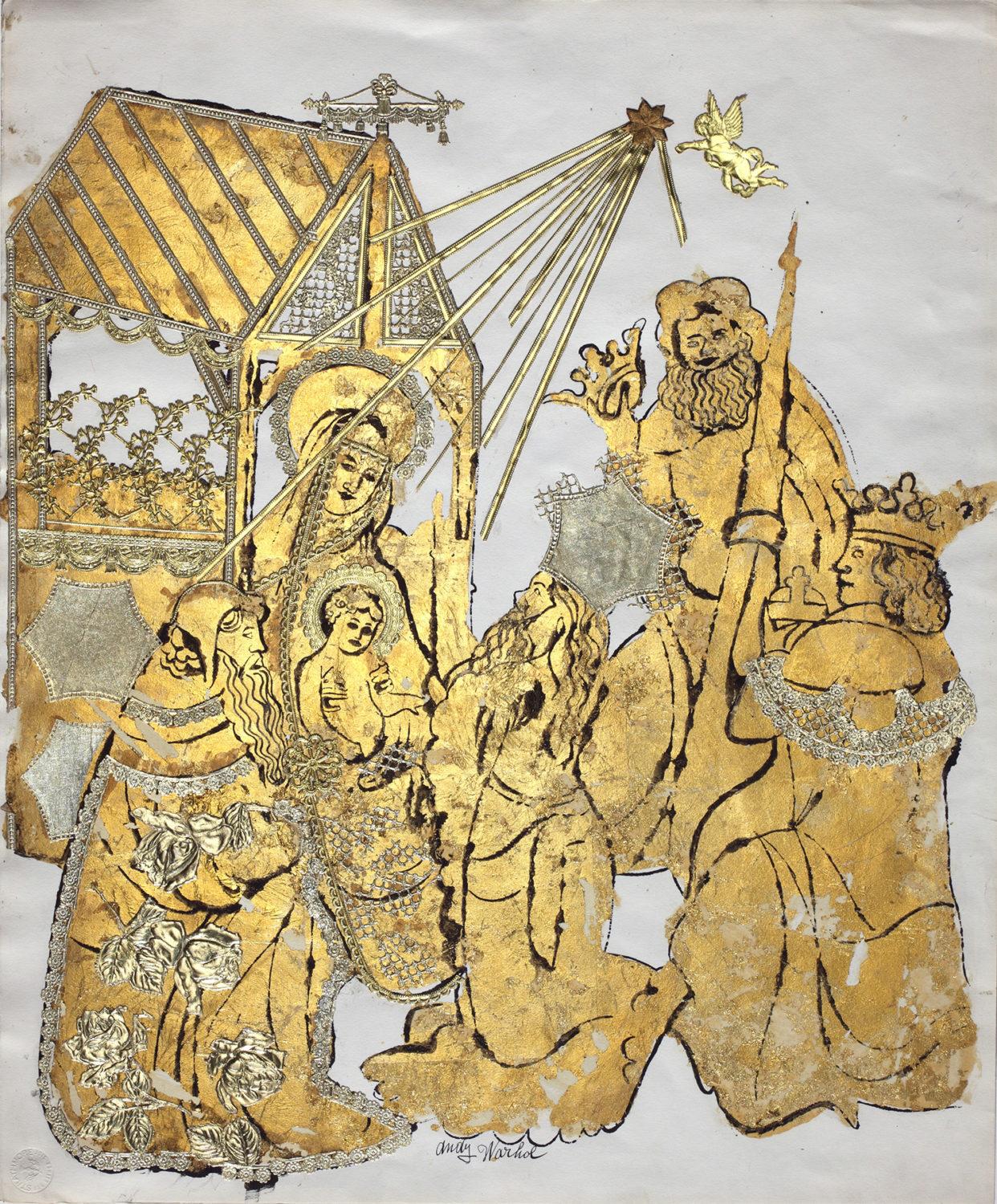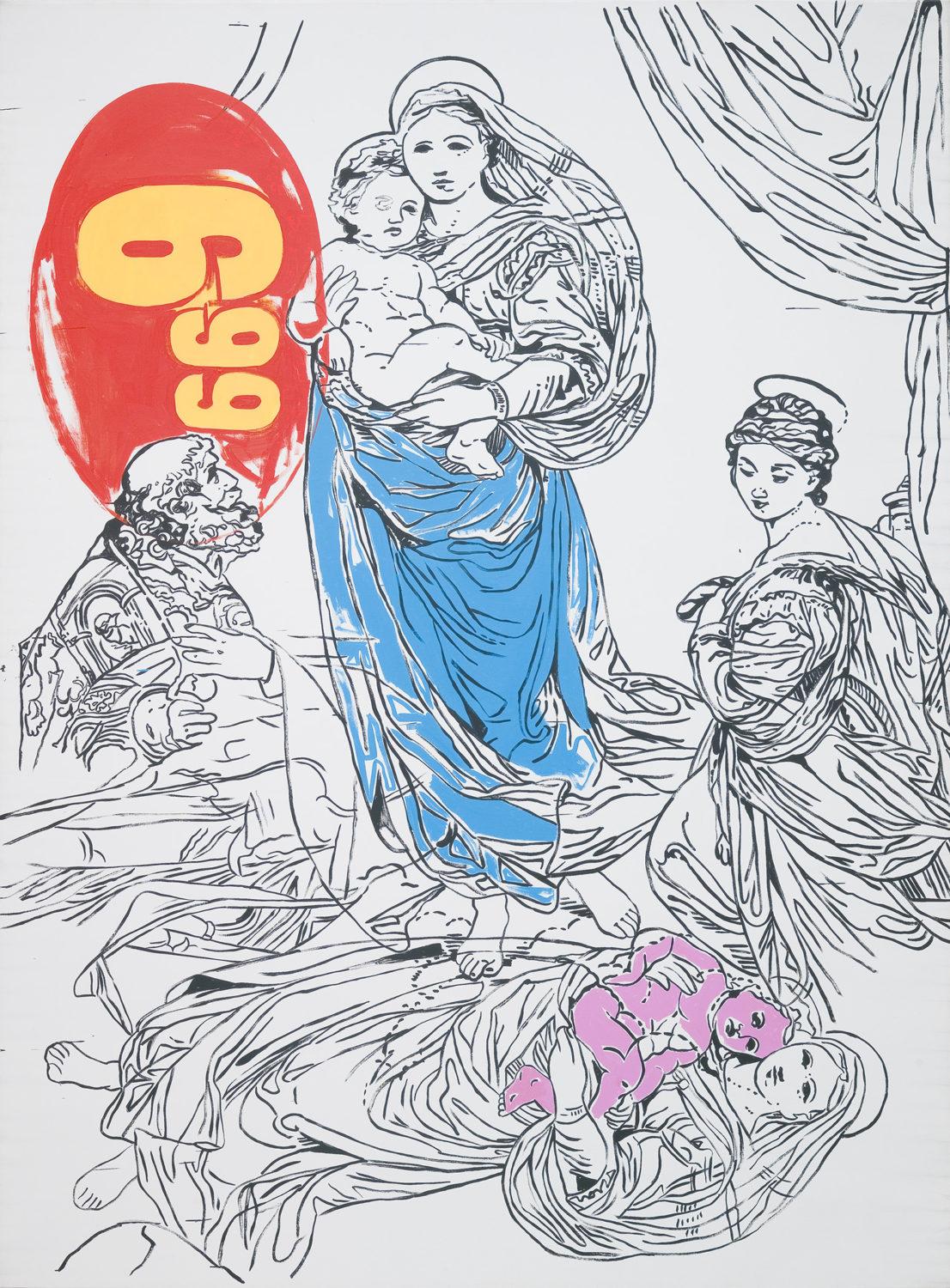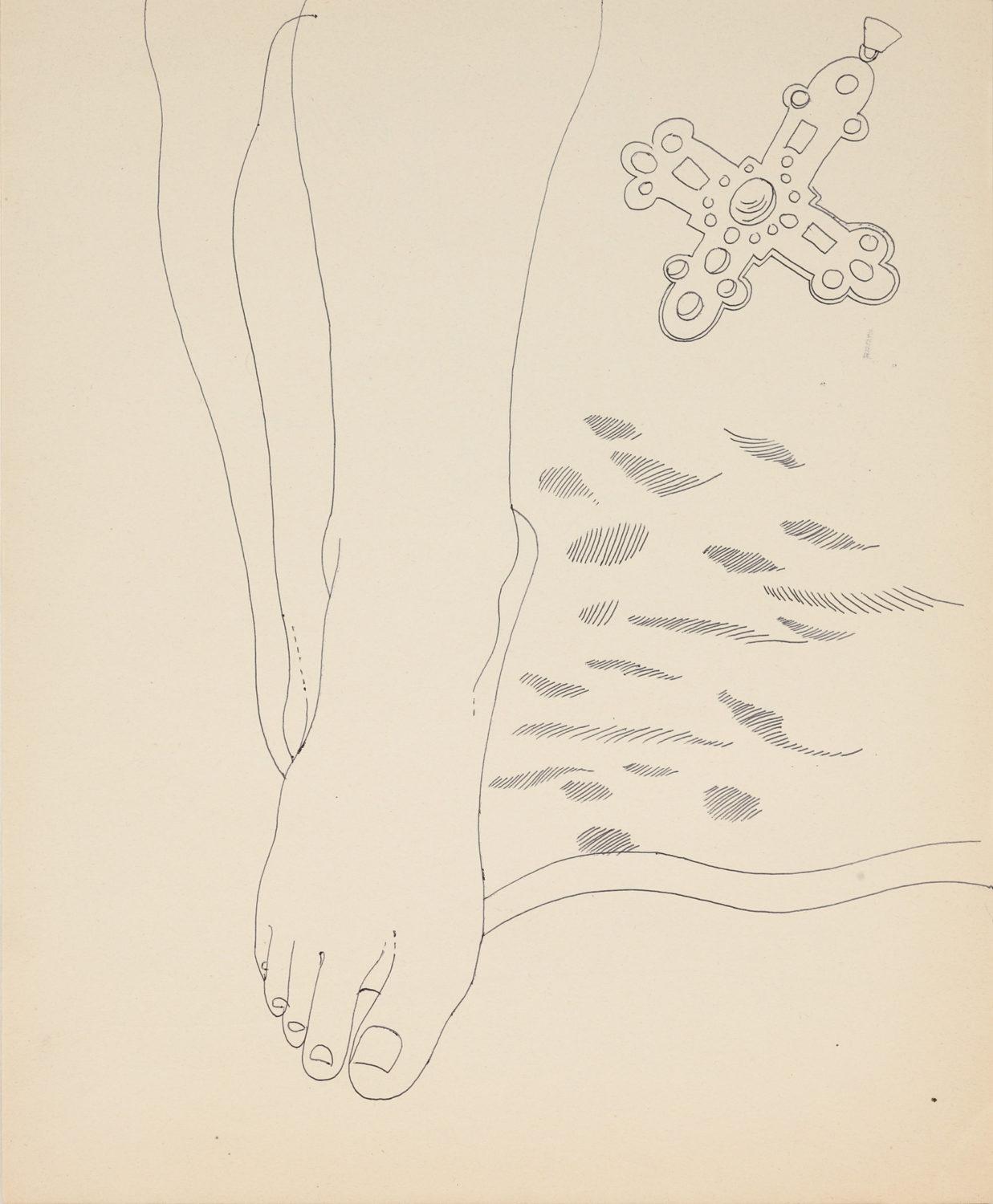Christian motifs frequently appear in both explicit and metaphorical forms throughout the body of Warhol’s oeuvre. While his monumental crosses and depictions of Christ directly reference biblical stories, the exhibition will also explore his coded depictions of spirituality such as an unfinished film reel depicting the setting sun, originally commissioned by the de Menil family and funded by the Roman Catholic Church.
Born in Pittsburgh to a devout Byzantine Catholic family, Warhol grew up attending multiple weekly services at his local church with his mother, Julia Warhola. He would stare for hours at the icon paintings of Christ and the saints that hung in the elaborate iconostasis, or icon screen, at the front of the nave. In the Warhola family’s Carpatho-Rusyn neighborhood, life revolved around the church community, and the young artist was deeply impacted from this environment. Using The Warhol’s robust holdings of the artist’s early works, the exhibition will trace the influence of his religious roots in Pittsburgh to his Pop career in New York City.
Throughout his life as a celebrity artist, Warhol retained some of his Catholic practices when his peers were distancing themselves from their religious backgrounds. Yet, his relationship with Catholicism was far from simple. As a queer man, Warhol may have felt a sense of guilt and fear towards the Catholic Church, which kept him from fully immersing himself in the faith. Nevertheless, he used various media to explore this tension through his art.
































